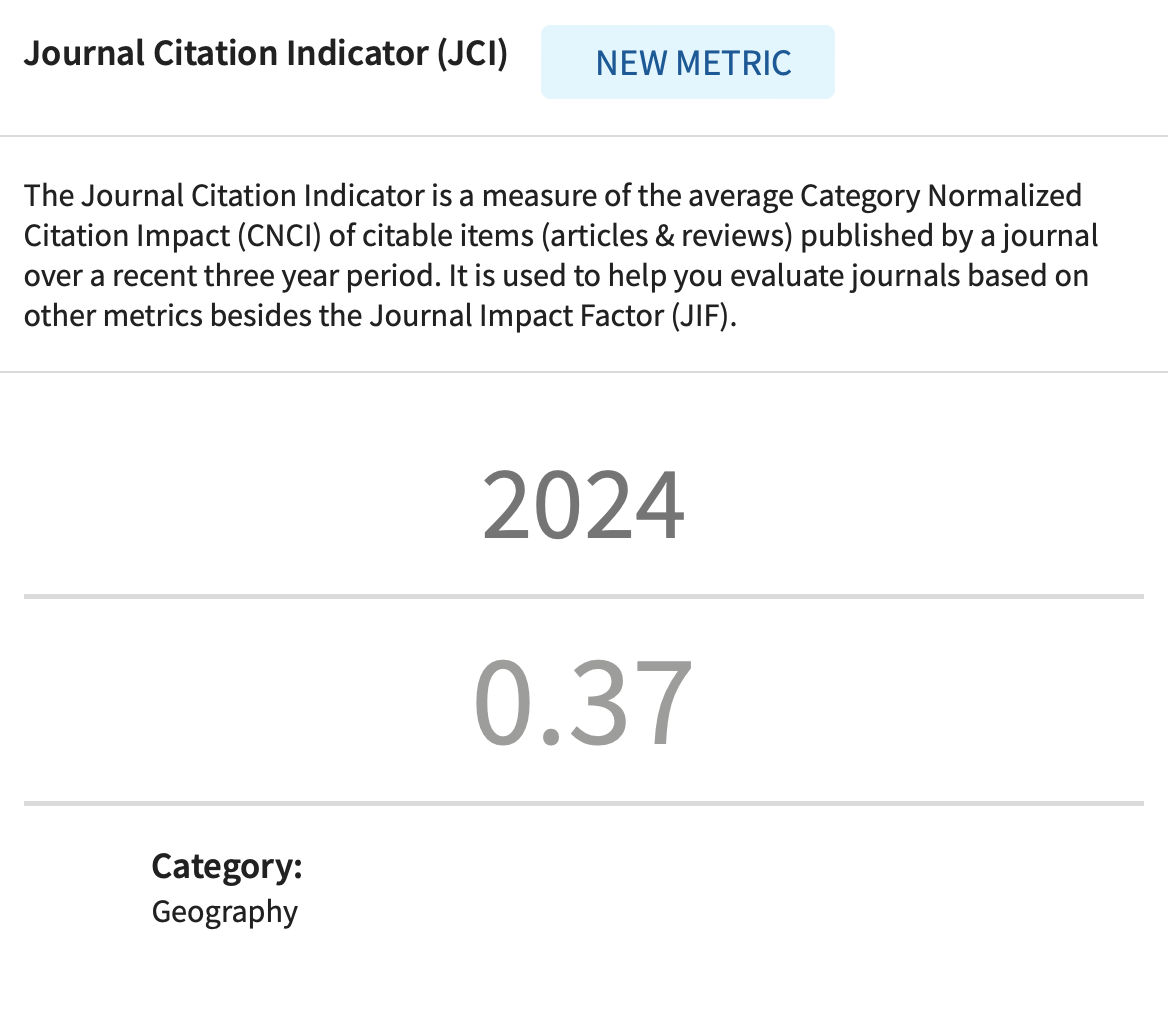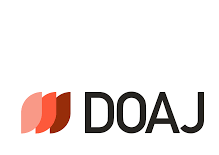WHAT FACTORS DO TOURISTS CONSIDER MOST IMPORTANT WHEN EVALUATING THE COMPETITIVENESS OF TOURISM? THE FOCUS ON DEVELOPING ECONOMY
DOI:
https://doi.org/10.2298/IJGI240814015CKeywords:
tourism destination competitiveness, tourists’ perspective, developing economy, SerbiaAbstract
Tourism is a critical driver of economic growth in developing countries, where it often serves as a primary source of international revenue, job creation, and infrastructure development. Understanding the factors of tourism competitiveness is essential because it highlights the strengths and opportunities of a destination, helping it stand out in a competitive global market. By improving competitiveness, destinations can attract more visitors, promote sustainable economic development, and enhance the quality of life for local residents. Competitiveness in tourism also supports cultural preservation and environmental conservation, contributing to a balanced and resilient local economy. The objective of this study is to determine the main factors that impact the competitiveness of Serbia as a tourism destination, focusing specifically on tourists’ viewpoints. Through a comprehensive methodology, the research develops a tailored model for evaluating tourism destination competitiveness (TDC) in a developing economy context. The results highlight the significance of Serbia’s natural and cultural heritage, service quality, accessibility, technology, marketing, and sustainability as critical dimensions of its TDC. The study’s originality lies in its tourist-centered approach to TDC, which offers valuable recommendations for policymakers and destination management organizations (DMOs) in Serbia. This research adds to the existing literature by introducing an innovative, tourist-focused model that provides practical insights for improving tourism competitiveness in emerging markets.
Article metrics
References
Armenski, T., Dwyer, L., & Pavluković, V. (2018). Destination Competitiveness: Public and Private Sector Tourism Management in Serbia. Journal of Travel Research, 57(3), 384–398. https://doi.org/10.1177/0047287517692445
Armenski, T., Gomezelj, D. O., Djurdjev, B., Ćurćič, N., & Dragin, A. (2012). Tourism Destination Competitiveness-between Two Flags. Economic Research-Ekonomska istraživanja, 25(2), 485–502. https://doi.org/10.1080/1331677X.2012.11517519
Bentler, P. M. (2006). EQS 6 Structural Equations Program Manual. Multivariate Software, Inc.
Browne, M. W., & Cudeck, R. (1992). Alternative Ways of Assessing Model Fit. Sociological Methods & Research, 21(2), 230–258. https://doi.org/10.1177/0049124192021002005
Bujang, M. A., Omar, E. D., & Baharum, N. A. (2018). A Review on Sample Size Determination for Cronbach’s Alpha Test: A Simple Guide for Researchers. Malaysian Journal of Medical Sciences, 25(6), 85–99. https://doi.org/10.21315/mjms2018.25.6.9
Cimbaljević, M., Panić, A., Pavlović, D., Pavluković, V., Pivac, T., Kovačić, S., & Stankov, U. (2023). Systematic literature review on tourism destination competitiveness research. Turizam, 27(1), 51–65. https://doi.org/10.5937/turizam27-42000
Cimbaljević, M., Stankov, U., & Pavluković, V. (2019). Going beyond the traditional destination competitiveness – reflections on a smart destination in the current research. Current Issues in Tourism, 22(20), 2472–2477. https://doi.org/10.1080/13683500.2018.1529149
Crouch, G. I. (2011). Destination Competitiveness: An Analysis of Determinant Attributes. Journal of Travel Research, 50(1), 27–45. https://doi.org/10.1177/0047287510362776
Ding, G., & Wu, J. (2022). Influence of Tourism Safety Perception on Destination Image: A Case Study of Xinjiang, China. Sustainability, 14(3), Article 1663. https://doi.org/10.3390/su14031663
do Rosário, J. F., de Lurdes Calisto, M., Machado, A. T., & Gustavo, N. (2022). Importance-Performance Analysis of Tourism Destination Attractiveness. In N. Gustavo, J. Pronto, L. Carvalho, & M. Belo (Eds.), Optimizing Digital Solutions for Hyper-Personalization in Tourism and Hospitality (pp. 231–244). IGI Global. https://doi.org/10.4018/978-1-7998-8306-7.ch012
Domínguez Vila, T. , Darcy, S., & Alén-González, E. (2015). Competing for the disability tourism market–A comparative exploration of the factors of accessible tourism competitiveness in Spain and Australia. Tourism Management, 47, 261–272. https://doi.org/10.1016/j.tourman.2014.10.008
Dragićević, V., Jovičić, D., Blešić, I., Stankov, U., & Bošković, D. (2012). Business Tourism Destination Competitiveness: A Case of Vojvodina Province (Serbia). Economic Research-Ekonomska istraživanja, 25(2), 311–332. https://doi.org/10.1080/1331677X.2012.11517510
Dwyer, L., Dragićević, V., Armenski, T., Mihalič, T., & Knežević Cvelbar, L. (2016). Achieving destination competitiveness: Аn importance-performance analysis of Serbia. Current Issues in Tourism, 19(13), 1309–1336. https://doi.org/10.1080/13683500.2014.944487
Dwyer, L., & Kim, C. (2003). Destination Competitiveness: Determinants and Indicators. Current Issues in Tourism, 6(5), 369–414. https://doi.org/10.1080/13683500308667962
Fornell, C., & Larcker, D. F. (1981). Evaluating Structural Equation Models with Unobservable Variables and Measurement Error. Journal of Marketing Research, 18(1), 39–50. https://doi.org/10.2307/3151312
Gao, H., & Tan, X. (2022). Study on Impact Factors of China B & B Customer Satisfaction. American Journal of Industrial and Business Management, 12(3), 302–308. https://doi.org/10.4236/ajibm.2022.123017
Geršič, M., Gašperič, P., Rus, P., Šmid Hribar, M., & Razpotnik Visković, N. (2022). Sustainable certification of a tourist destination through the prism of visitor’s point of view. Acta Geographica Slovenica, 62(3), 85–102. https://doi.org/10.3986/AGS.11214
Ghose, S., & Johann, M. (2019). Measuring tourist satisfaction with destination attributes. Journal of Management and Financial Sciences, 11(34), 9–22. https://doi.org/10.33119/jmfs.2018.34.1
Goffi, G., Cucculelli, M., & Masiero, L. (2019). Fostering tourism destination competitiveness in developing countries: The role of sustainability. Journal of Cleaner Production, 209, 101–115. https://doi.org/10.1016/J.JCLEPRO.2018.10.208
Guizzardi, A., & Mariani, M. M. (2020). Introducing the Dynamic Destination Satisfaction Method: An Analytical Tool to Track Tourism Destination Satisfaction Trends with Repeated Cross-sectional Data. Journal of Travel Research, 60(5), 965–980. https://doi.org/10.1177/0047287520958205
Hanafiah, M. H., & Zulkifly, M. I. (2019). The Evolution of Tourism Destination Competitiveness (TDC) Models. In R. Hashim, M. H. Hanafiah, & M. Jamaluddin (Eds.), Positioning and Branding Tourism Destinations for Global Competitiveness (pp. 23–48). IGI Global. https://doi.org/10.4018/978-1-5225-7253-4.CH002
Hoyle, R. H. (1995). The Structural Equation Modeling Approach: Basic Concepts and Fundamental Issues. In R. H. Hoyle (Ed.), Structural Equation Modeling: Concepts, Issues, and Applications (pp. 1–15). Sage Publications Inc.
Kim, H., Joun, H. J., Choe, Y., & Schroeder, A. (2019). How Can a Destination Better Manage Its Offering to Visitors? Observing Visitor Experiences via Online Reviews. Sustainability, 11(17), Article 4660. https://doi.org/10.3390/su11174660
Kovačić, S., Pavluković, V., Pivac, T., & Pavlović, D. (2023). Development of a Tourism Destination Competitiveness Model for Serbia–A Participatory Approach. European Economic Letters (EEL), 13(1), 237–244. https://doi.org/10.52783/eel.v13i1.158
Milutinovic, V., Musanovic, J., & Beric, D. (2021). Stakeholders’ perceptions of a competitive tourism destination: empirical evidence from Serbia. Tourism Review, 77(2), 413–426. https://doi.org/10.1108/TR-02-2021-0092
Mwesiumo, D., & Abdalla, M. J. (2022). Exploring the relative importance of epistemic value, value for money and perceived safety in visitors’ evaluation of a destination. Current Issues in Tourism, 26(6), 868–873. https://doi.org/10.1080/13683500.2022.2105197
Neto, A. Q., Dimmock, K., Lohmann, G., & Scott, N. (2020). Destination competitiveness: how does travel experience influence choice? Current Issues in Tourism, 23(13), 1673–1687. https://doi.org/10.1080/13683500.2019.1641070
Ngoc Su, D., Nguyen, N. A. N., Nguyen, Q. N. T., & Tran, T. P. (2020). The link between travel motivation and satisfaction towards a heritage destination: The role of visitor engagement, visitor experience and heritage destination image. Tourism Management Perspectives, 34, Article 100634. https://doi.org/10.1016/j.tmp.2020.100634
Nguyen, L. T. P., Nguyễn, A. M., & Hồ, N. T. H. (2022). Pro-environmental behavior in sustainable tourism: the impact of using "Environmental feedback". Science & Technology Development Journal: Economics-Law & Management, 6(1), 2142–2151. https://doi.org/10.32508/stdjelm.v6i1.822
Nugroho, I., Hanafie, R., Rahayu, Y. I., S., Yuniar, H., Azizah, R., & Hasanah, R. (2021). Sustainable Hospitality and Revisit Intention in Tourism Services. Journal of Physics: Conference Series, 1908, Article 012004. https://doi.org/10.1088/1742-6596/1908/1/012004
Pavković, V., Vlastelica, T., Kostić-Stanković, M., & Dlačić, J. (2023). Experiences and Expectations: Drivers of Urban Tourist Destination Competitiveness. Journal of Sustainable Business and Management Solutions in Emerging Economies. Advance online publication. https://management.fon.bg.ac.rs/index.php/mng/article/download/469/295
Pavluković, V., Kovačić, S., Pavlović, D., Stankov, U., Cimbaljević, M., Panić, A., Radojević, T., & Pivac, T. (2024). Tourism destination competitiveness: An application model for Serbia. Journal of Vacation Marketing, 1–19. https://doi.org/10.1177/13567667241261396
Pearson, R. H., & Mundform, D. J. (2010). Recommended Sample Size for Conducting Exploratory Factor Analysis on Dichotomous Data. Journal of Modern Applied Statistical Methods, 9(2), 359–368. https://doi.org/10.56801/10.56801/v9.i.494
Petrović, M. D., Vujko, A., Gajić, T., Vuković, D. B., Radovanović, M., Jovanović, J. M., & Vuković, N. (2017). Tourism as an Approach to Sustainable Rural Development in Post-Socialist Countries: A Comparative Study of Serbia and Slovenia. Sustainability, 10(1), Article 54. https://doi.org/10.3390/su10010054
Ragimkhanov, A., & Zhukovskaya, I. (2023). Assessment of the competitiveness of tourism services in the region: modern realities. Nexo Revista Científica, 36(4), 716–728. https://doi.org/10.5377/nexo.v36i04.16799
Reisinger, Y., Michael, N., & Hayes, J. P. (2018). Destination competitiveness from a tourist perspective: A case of the United Arab Emirates. International Journal of Tourism Research, 21(2), 259–279. https://doi.org/10.1002/jtr.2259
Ritchie, J. R. B., & Crouch, G. I. (2003). The Competitive Destination – A Sustainable Tourism Perspective. CABI Publishing.
Streimikiene, D., Svagzdiene, B., Jasinskas, E., & Simanavicius, A. (2020). Sustainable tourism development and competitiveness: The systematic literature review. Sustainable Development, 29(1), 259–271. https://doi.org/10.1002/sd.2133
Tabaeeian, R. A., Yazdi, A., Mokhtari, N., & Khoshfetrat, A. (2022). Host-tourist interaction, revisit intention and memorable tourism experience through relationship quality and perceived service quality in ecotourism. Journal of Ecotourism, 22(3), 406–429. https://doi.org/10.1080/14724049.2022.2046759
Tang, H., Wang, R., Jin, X., & Zhang, Z. (2022). The Effects of Motivation, Destination Image and Satisfaction on Rural Tourism Tourists’ Willingness to Revisit. Sustainability, 14(19), Article 11938. https://doi.org/10.3390/su141911938
Tripathi, G., & Wasan, P. (2021). Positioning of tourist destinations in the digital era: a review of online customer feedback. Worldwide Hospitality and Tourism Themes, 13(2), 275–290. https://doi.org/10.1108/WHATT-09-2020-0122
Tse, S., & Tung, V. W. S. (2021). Measuring the Valence and Intensity of Residents’ Behaviors in Host–Tourist Interactions: Implications for Destination Image and Destination Competitiveness. Journal of Travel Research, 61(3), 565–580. https://doi.org/10.1177/0047287521997576
Vlada Republike Srbije, Ministarstvo trgovine, turizma i telekomunikacija. (2016). Strategija razvoja turizma Republike Srbije za period 2016–2025 [Tourism Development Strategy of the Republic of Serbia 2016–2025]. http://mtt.gov.rs/download/3/strategija.pdf
Wei, C., Hashim, W., Ibrahim, W., Lo, M., & Azlan, A. (2023). Assessing the Influence of Hard and Soft Infrastructure on Perceived Destination Competitiveness: Perspective from Visitors in Sarawak. International Journal of Business and Society, 24(2), 761–786. https://doi.org/10.33736/ijbs.5961.2023
World Economic Forum. (2024). Travel & Tourism Development Index. Insight Report. https://www3.weforum.org/docs/WEF_Travel_and_Tourism_Development_Index_2024.pdf
Yasami, M., Phetvaroon, K., & Zhu, H. (2021). International tourists’ Choices and satisfaction of small restaurants in Thailand: the influence of food safety indicators. Journal of Foodservice Business Research, 25(5), 499–532. https://doi.org/10.1080/15378020.2021.1964340
Zeng, L., Li, R. Y. M., & Huang, X. (2021). Sustainable Mountain-Based Health and Wellness Tourist Destinations: The Interrelationships between Tourists’ Satisfaction, Behavioral Intentions, and Competitiveness. Sustainability, 13(23), Article 13314. https://doi.org/10.3390/su132313314
Zhuk, P. (2022). Turystychno-rekreatsiyna sfera rehionu yak ob’yekt doslidzhennya konkurentospromozhnosti [Regional tourism and recreation domain as an object of competitiveness research]. Regional Economy, 104(2), 17–24. https://doi.org/10.36818/1562-0905-2022-2-2
Zijing, G., & Qiongxian, Q. (2023). Research on Tourist Perception and Quality Improvement of Dali B&B: Based on Network Text Analysis. Academic Journal of Business & Management, 5(11), 35–41. https://doi.org/10.25236/ajbm.2023.051105
Zulkifli, A. A. (2023). Optimizing the Cleanliness Management of Coastal Lodgings and Homestays. Journal La Bisecoman, 4(1), 9–16. https://doi.org/10.37899/journallabisecoman.v4i1.862
Downloads
Published
How to Cite
Issue
Section
License
Copyright (c) 2025 Journal of the Geographical Institute “Jovan Cvijić” SASA

This work is licensed under a Creative Commons Attribution 4.0 International License.











